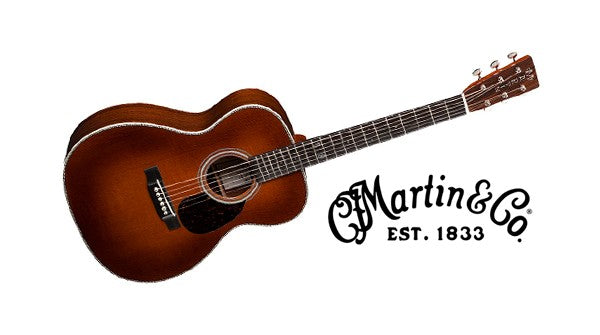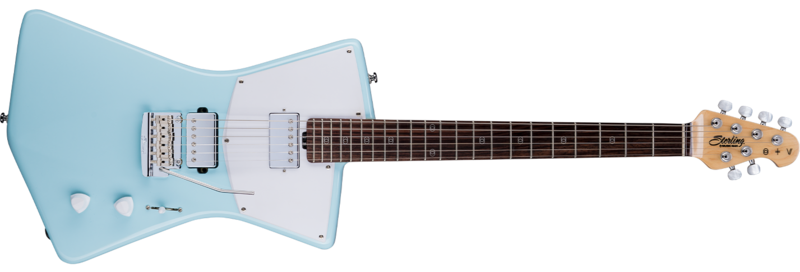Your Cart is Empty
Introducing Cole Clark Guitars
April 09, 2019 5 min read

Adirondack Guitar is proud to announce that we are now a dealer of Cole Clark guitars. Cole Clark acoustic and acoustic/electric guitars are extremely high quality instruments, built with meticulous care in their factory in Melbourne, Australia. Featuring sustainable tonewoods, high quality ‘classical’ neck through construction, and the world’s most innovative pickup system, we are sure you will find a Cole Clark guitar that is perfect for your musical needs. Read on to learn more about this cutting edge guitar company from down under.
Cole Clark Overview
Cole Clark guitars was started by Bradley Clark and Adam Cole back in 2001 when they set out to produce Spanish Heel through-neck acoustic guitars with the world’s best pickup system. Starting out, Cole Clark made electric and acoustic guitars, along with ukuleles, lap steel guitars and basses. However, after suffering a catastrophic fire in 2013, Cole Clark took a step back to reevaluate their business. Having already stopped the production of electric guitars, Cole Clark then stopped making ukuleles and after 5 months out of production, CEO Miles Jackson put in a new CNC, paint booth, drying kilns, and redesigned the production flow and quality control, streamlining their business, and emerging with a renewed vision.
Unique Spanish Heel Body Construction and ‘Internally Carved’ Arch Tops
While Cole Clark is one of the most forward thinking brands in the acoustic guitar market, they went back to classical construction and combined it with innovative manufacturing techniques to produce a lighter, stronger guitar with a naturally amplified sound. Cole Clark is the only mainstream steel-string acoustic guitar company to apply integral neck construction, also known as the Spanish heel. This kind of set neck construction is different from bolt-on and dovetail neck joints in that the neck is actually glued to the face of the guitar along with the back and sides. This means that the neck runs in a single piece all of the way to the sound hole, giving Cole Clark guitars a sound that is unique among steel string acoustics.
Another design innovation that is unique to Cole Clark guitars is the carved interior. The internal construction of Cole Clark guitars includes the top and back being ‘internally carved’ which is almost like having an arch top on the inside of the guitar, giving it a highly resonant and rich sound. Cole Clark also uses a ridge system rather than standard kerfing to join the sides to the top and back, making the design more solid and stable. These innovations give Cole Clark guitars their uniquely rich and bright, naturally amplified tone, with excellent acoustic volume.
Unique and Sustainable Tonewoods
In their 20 year history, Cole Clark has really grown, expanding into an internationally renowned brand of acoustic guitars with industry-leading electronic components and a long term view toward sustainability and eco-responsibility (read the Cole Clark Guitars environmental statement here). Since 2014, Cole Clark has made great strides toward making their guitars completely environmentally sustainable. In fact, according to their website, 85% of the guitars that they produce are 100% sustainable and made from locally sourced Australian tonewoods.
In the past, like all North American and European guitar makers, Cole Clark imported commonly used tone woods like various types of Spruce, Western Red Cedar, Californian Redwood, Indian Rosewood, varieties of Ebony, North American Maple, various Mahoganies and Koa. However, over the years, many of these tone woods became endangered. In 1967 it became illegal to export Brazilian Rosewood, and soon afterward Indian Rosewood, Ebony, Cocobolo, and most varieties of Mahogany started showing up on lists of vulnerable or endangered species. This led Cole Clark to think locally when it came to sourcing tonewoods for their guitars.

The search for sustainable tonewoods led Cole Clark’s luthiers to source tonewoods in privately owned plantations in Queensland territory, on the island of Tasmania and elsewhere in Australia. This locally sourced timber, like Australian Blackwood, Australian grown Redwood, Australian grown African mahogany, Queensland Maple Silkwood, Huon Pine, Queensland grown Black Bean and Satin Box, along with sustainable (not endangered) externally sourced timbers like Western Red Cedar from the Pacific Northwest, give Cole Clark guitars aesthetics that are not only unique to their brand, but also unique from one guitar to another. Australian tonewoods often have exceptionally beautiful grain patterns and sap lines that are as individual in appearance as fingerprints, making each guitar like a unique work of art.
Of course, this may make you wonder, if each guitar looks so unique, do they each have their own unique sound? The tonal characteristics of each tone wood are consistent enough that Clark Cole guitars have a consistently rich and bright tone that is highly versatile. When you add to this tone the world’s most natural sounding acoustic/electric pickup, you have unprecedented tonal control and amazing versatility that is perfect for any form of acoustic music.
The World’s Most Natural Sounding Pickup
In designing their acoustic-electric guitars, Cole Clark did not approach their pickups and electronics as a simple after-thought. Instead, they designed their unique 3-way analog pickup system that produces the most natural acoustic-electric sound in the industry without any feedback, even at concert volume. The secret to the Cole Clark 3-way pickup’s natural sound is the unique approach that was taken when designing it.
All sound systems are set up to amplify a range of frequencies, not just one single frequency. For instance, a PA system will have speakers, horns, woofers and subwoofers to amplify the entire range of frequencies. Like a PA system, an acoustic guitar emits a range of frequencies from bass, to mid-range, to treble frequencies that really can’t be effectively captured by a single device in one specific location on the guitar. This led Cole Clark engineers to design a pickup system that could amplify all three frequencies equally well.
Most acoustic electric guitar pickups are designed to capture only one type of frequency, from either the bridge, the top or the sound hole. For instance, a traditional piezo pickup captures the frequencies from the bridge, but does not amplify the sound from the top, nor the resonance from the sound hole, and a piezo alone often has an unnatural ‘quack’ or ‘ping’ to its sound that can be undesirable in an acoustic electric. The Cole Clark 3-Way analog preamp system combines a piezo bridge with a unique face sensor designed to amplify the mid range tones from the guitar’s top.
The third component in the 3-way analog preamp system is a condenser microphone inside the body which is designed to capture the top end frequencies. This microphone is set to be well above any feedback zone. Using a patented blend control, you can then increase or reduce the amount of face sensor that you need to balance out the piezo and the condenser microphone, giving the 3-way analog pickup system an incredibly natural, rich and sonorous sound. Since each element in the system is design to hear a specific frequency range, feedback and annoying hum are basically eliminated, making Cole Clark acoustic electric guitars like Angel 2 EC, now available in our store and on our website, perfect for live performances.

We hope you’ll take a minute tovisit our website and take a closer look at the Cole Clark acoustic electric guitars that we are currently carrying including the Angel 2 EC, a grand auditorium style acoustic, and the Fat Lady 2 EC, a Dreadnought style. Both feature Australian Blackwood and unique tonewoods in their constructions and the innovative 3-way preamp system that allows you to articulate your tone exactly the way you wish.

Leave a comment
Comments will be approved before showing up.
Also in Adirondack Guitar News and Blog
Browse Our Store
Recent Articles
- Left Handed Guitarists Who Learned to Play Right Handed July 13, 2021
- The History and Importance of the Martin 28 Style July 13, 2021
- Adirondack Guitar Profiles: St. Vincent July 13, 2021
- Adirondack Guitar Profiles: John Petrucci May 05, 2021
- How to Turn Your Music Skills into a Career March 30, 2021



